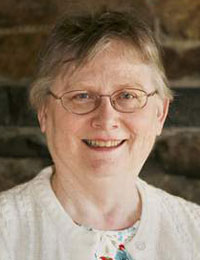 Okay, so now we have a pile of bricks. Are we ready to start building our genealogical house? No. We need to know what the house is supposed to look like (blue prints) and the regulations about how the house should be constructed (codes). If we were really building a house, of course, this is where we’d hire an architect and a contractor, but the fun of genealogy is in doing-it-oneself, so we have to educate ourselves about construction. Continue reading Blue prints, building codes, and inspections
Okay, so now we have a pile of bricks. Are we ready to start building our genealogical house? No. We need to know what the house is supposed to look like (blue prints) and the regulations about how the house should be constructed (codes). If we were really building a house, of course, this is where we’d hire an architect and a contractor, but the fun of genealogy is in doing-it-oneself, so we have to educate ourselves about construction. Continue reading Blue prints, building codes, and inspections
Tag Archives: Critical Analysis
Returning to my ancestral home in Nova Scotia
 My actual hometown is seventeen miles south of Boston; I have called Stoughton my home since birth, and as a genealogist I can claim a variety of ancestral home towns or villages. Genealogically speaking, however, I feel most at home in Nova Scotia, Canada.
My actual hometown is seventeen miles south of Boston; I have called Stoughton my home since birth, and as a genealogist I can claim a variety of ancestral home towns or villages. Genealogically speaking, however, I feel most at home in Nova Scotia, Canada.
My paternal great-grandfather, James Albert George Lambert of Halifax (1846-1928), was for many years my genealogical brick wall. Back in the 1980s and 1990s I spent countless hours writing letters and going online, but these searches never allowed me to leap over that brick wall. Continue reading Returning to my ancestral home in Nova Scotia
Learning from our mistakes
We often learn from our mistakes. A promise that “I won’t do that again” can be a valuable tool. And, if repeated enough times, it becomes known as experience.
A decade ago I had a luncheon talk entitled “My Ten Worst Mistakes in Genealogy.” When the title appeared, Robert Charles Anderson commented, “and he updates it frequently!” In fact, I do update it, but now I separate the mistakes that did not appear in print or in a lecture from those that did. And I’m glad to say the former far outweigh the latter. Continue reading Learning from our mistakes
Genealogical building blocks
 A master mason can “butter” a brick and add it to a straight and true wall in a matter of seconds. He learns to do this through repeated practice, laying thousands of bricks in hundreds of walls.
A master mason can “butter” a brick and add it to a straight and true wall in a matter of seconds. He learns to do this through repeated practice, laying thousands of bricks in hundreds of walls.
In genealogy we deal with bricks that we call primary, secondary, and circumstantial evidence. A house made entirely of primary bricks is the strongest, but those bricks are often hard to find and expensive. Most of us have houses made from primary and secondary bricks that are perfectly sound. A house of only secondary bricks is substandard to modern building code. Circumstantial bricks are kept for building flying buttresses to hold up wobbly walls. Continue reading Genealogical building blocks
What we inherit, or, critical analysis
 The seventy-ninth anniversary of my parents’ marriage falls on 30 March 2014. They were married for 71 years before my mother’s death at age 99 years, 6 months, and 9 days in 2006. Mom was my connection to genealogy. Her mother was the last of her branch of the family and inherited and treasured all of the possessions, lore, and memories that came down to her. They’ve all been passed to me now. Continue reading What we inherit, or, critical analysis
The seventy-ninth anniversary of my parents’ marriage falls on 30 March 2014. They were married for 71 years before my mother’s death at age 99 years, 6 months, and 9 days in 2006. Mom was my connection to genealogy. Her mother was the last of her branch of the family and inherited and treasured all of the possessions, lore, and memories that came down to her. They’ve all been passed to me now. Continue reading What we inherit, or, critical analysis
An answer – and more questions

As a follow-up to my first post at Vita Brevis, back in early January, I am happy to report that a likely photograph of my great-grandfather Edward Hughes Glidden (1873-1924) has surfaced – but, initially (and tantalizingly), an accident to the glass plate meant that his face was obscured.
The caption for the photograph reads ”1920. Man in Overcoat walking by Homewood Apartments. Man could be Lt. Glidden, architect and resident of Homewood apts.” on North Charles Street in Baltimore. According to the collection’s online catalogue, the captioner provided the identification for the photograph’s subject, and I wonder if the original notation was for E. H. Glidden, the name he most often used professionally. Continue reading An answer – and more questions